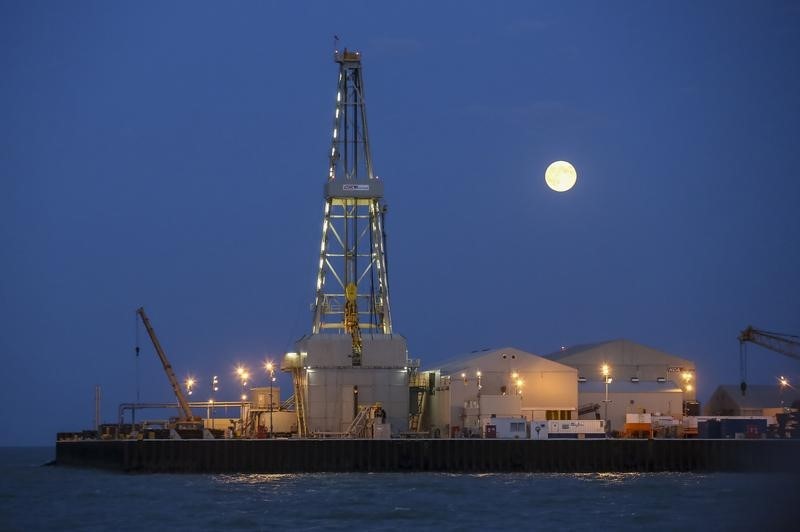By Henning Gloystein
SINGAPORE (Reuters) - Oil prices rose on Wednesday, supported by increasing confidence that an OPEC-led production cut aimed at tightening the market would be extended through the rest of 2017 and the first quarter of next year.
Brent crude futures at 0147 GMT were up 13 cents from their last close at $54.28 per barrel.
U.S. West Texas Intermediate (WTI) crude futures were at $51.58, up 11 cents.
Both benchmarks have risen more than 12 percent from their May lows.
Prices have rebounded on a growing consensus that a pledge by the Organization of the Petroleum Exporting Countries (OPEC) and other producers, including Russia, to cut supplies by 1.8 million barrels per day (bpd) would be extended to March 2018, instead of just covering the first half of this year.
"OPEC is meeting on 25 May with an extension of supply cuts at the top of its agenda. With oil stocks nowhere near OPEC's... objective of the recent five-year average level, an extension of cuts seems all but a foregone conclusion," French bank BNP Paribas (PA:BNPP) said.
Although there have been signs of inventories dipping recently, overall stocks remain bloated following years of overproduction.
DOES BACKWARDATION HELP?
One of the main reasons why markets have not tightened more has been U.S. oil production, which has soared more than 10 percent since mid-2016 to 9.3 million bpd.
Benefiting from a market structure known as contango, in which future oil prices are higher than those for immediate delivery, U.S. drillers have sold future production in order to finance expanding output.
To stop this, some analysts, like the oil research team at Goldman Sachs (NYSE:GS), have suggested that the price curve should be pushed into backwardation, in which future oil prices are below current ones.
Whether this would stop U.S. production from rising is unclear.
"It seems of the 0.5 million bpd production growth this year, 0.4 million bpd will come from large oil companies ... that are less sensitive to factors such as the curve shape," said Virendra Chauhan, analyst at Energy Aspects.
Past crude forward curves show that U.S. oil production rose at the fastest pace during times when prices were in backwardation (2011 to 2014), while output fell when the curve moved into contango from 2015.
It is possible that the backwardation between 2011 and 2014 was irrelevant as overall price levels were so high that production was profitable anyway.
Others, however, point out that U.S. producers are now so efficient that they can live with prices as low as $40 per barrel, suggesting that an extreme backwardation would be needed to squeeze them out of the market.
